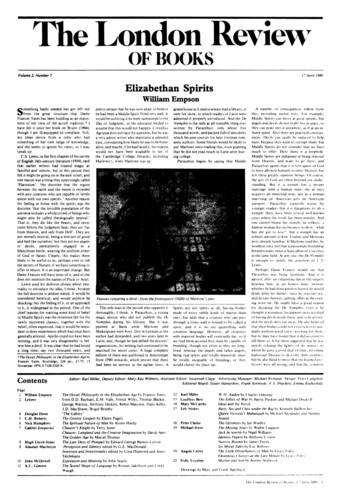Over-Achievers
C.H. Roberts, 5 February 1987
‘We are a third race,’ claimed Tertullian. Were the early Christians really so different and, if they were, how and why? This is the principal question Robin Lane Fox sets out to answer in this compelling and readable book, which is also a major work of historical scholarship. It is a study of differing and competing religions in the second and third centuries AD: not so much of ideas and systems as of how ordinary pagans and Christians behaved and thought, their cults, their visions, their sense of divine activity in oracle and prophecy. (A strange omission is any treatment of Christian cult and liturgy.) He writes with an easy command of multifarious sources: poets, essayists, novelists, letter-writers, martyracts, papyri and, above all, the mass of inscriptions, especially those from Asia Minor and North Africa. All this is controlled by and collated with the latest academic discussions and archaeological discoveries. He gives scope to his own feelings and sensibilities, but not at the cost of obscuring facts or to the detriment of a critical judgment. All notes are properly kept to the end of the book.



